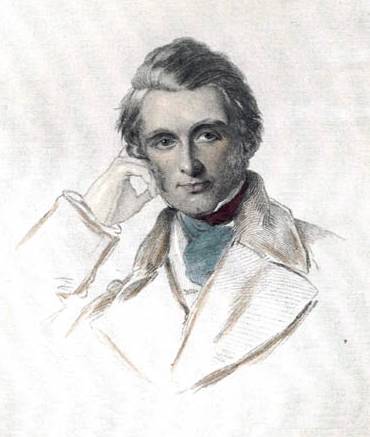Thus, in the treatment of the features of the human face by Francia or Angelico, the shadows are employed only to make the contours of the features thoroughly felt; and to those features themselves the mind of the observer is exclusively directed (that is to say, to the essential characters of the thing represented). All power and all sublimity rest on these; the shadows are used only for the sake of the features. On the contrary, by Rembrandt, Salvator, or Caravaggio, the features are used for the sake of the shadows; and the attention is directed, and the power of the painter addressed, to characters of accidental light and shade cast across or around those features. In the case of Rembrandt there is often an essential sublimity in invention and expression besides, and always a high degree of it in the light and shade itself; but it is, for the most part, parasitical or engrafted sublimity as regards the subject of the painting, and, just so far, picturesque.
Again, in the management of the sculptures of the Parthenon, shadow is frequently employed as a dark field on which the forms are drawn. This is visibly the case in the metopes, and must have been nearly as much so in the pediment. But the use of that shadow is entirely to show the confines of the figures; and it is to their lines, and not to the shapes of the shadows behind them, that the art and the eye are addressed. The figures themselves are conceived, as much as possible, in full light, aided by bright reflections; they are drawn exactly as, on vases, white figures on a dark ground; and the sculptors have dispensed with, or even struggled to avoid, all shadows which were not absolutely necessary to the explaining of the form. On the contrary, in Gothic sculpture, the shadow becomes itself a subject of thought. It is considered as a dark colour, to be arranged in certain agreeable masses; the figures are very frequently made even subordinate to the placing of its divisions: and their costume is enriched at the expense of the forms underneath, in order to increase the complexity and variety of the points of shade. There are thus, both in sculpture and painting, two, in some sort, opposite schools, of which the one follows for its subject the essential forms of things, and the other the accidental lights and shades upon them. There are various degrees of their contrariety: middle steps, as in the works of Correggio, and all degrees of nobility and of degradation in the several manners: but the one is always recognised as the pure and the other as the picturesque school. Portions of picturesque treatment will be found in Greek work, and of pure and unpicturesque in Gothic; and in both there are countless instances, as pre-eminently in the works of Michael Angelo, in which shadows become valuable as media of expression, and therefore take rank among essential characteristics.
Again, in the management of the sculptures of the Parthenon, shadow is frequently employed as a dark field on which the forms are drawn. This is visibly the case in the metopes, and must have been nearly as much so in the pediment. But the use of that shadow is entirely to show the confines of the figures; and it is to their lines, and not to the shapes of the shadows behind them, that the art and the eye are addressed. The figures themselves are conceived, as much as possible, in full light, aided by bright reflections; they are drawn exactly as, on vases, white figures on a dark ground; and the sculptors have dispensed with, or even struggled to avoid, all shadows which were not absolutely necessary to the explaining of the form. On the contrary, in Gothic sculpture, the shadow becomes itself a subject of thought. It is considered as a dark colour, to be arranged in certain agreeable masses; the figures are very frequently made even subordinate to the placing of its divisions: and their costume is enriched at the expense of the forms underneath, in order to increase the complexity and variety of the points of shade. There are thus, both in sculpture and painting, two, in some sort, opposite schools, of which the one follows for its subject the essential forms of things, and the other the accidental lights and shades upon them. There are various degrees of their contrariety: middle steps, as in the works of Correggio, and all degrees of nobility and of degradation in the several manners: but the one is always recognised as the pure and the other as the picturesque school. Portions of picturesque treatment will be found in Greek work, and of pure and unpicturesque in Gothic; and in both there are countless instances, as pre-eminently in the works of Michael Angelo, in which shadows become valuable as media of expression, and therefore take rank among essential characteristics.
(Seven Lamps of Architecture, Chapter VI)
